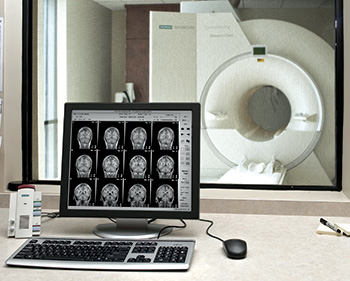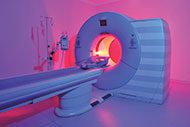 For the first time, the Joint Commission is requiring accredited providers to comply with new modality-specific imaging standards as a part of their accreditation.
For the first time, the Joint Commission is requiring accredited providers to comply with new modality-specific imaging standards as a part of their accreditation.
Written partly in response to medical radiation exposure accidents that drew public attention several years ago, the new standard followed a series of articles in The New York Times in 2010 and 2011 that highlighted both equipment and personnel failings that exposed patients to excessive radiation from medical imaging and therapy.
A common thread among many of these accidents was that existing accreditation programs, designed to protect the quality and safety of health care services, had not successfully prevented these injuries.
The upshot was the new Diagnostic Imaging Standards for accredited hospitals, critical access hospitals and ambulatory health care organizations, which were enacted by the Joint Commission in July.
Focus on modalities
In the past, enterprise-level accreditors such as the Joint Commission largely had ceded modality-specific accreditation criteria to modality-level accrediting bodies whose accreditations are not required for Centers for Medicare & Medicaid Services (CMS) reimbursement for hospitals, such as the American College of Radiology (ACR) or the Intersocietal Accreditation Commission. (Modality-level accreditation is required for CMS reimbursement at independent diagnostic testing facilities.)
You may also like |
| FGI Guidelines keep up with imaging advances |
| Designing for PET/MR systems |
| How regulations influence space planning |
| |
However, the Joint Commission’s current emphasis on imaging standards is believed to be, at least partly, a response to CMS’s concerns — expressed to its deemed hospital accreditors — that existing standards were too loose to prevent radiation exposure accidents.
While the Joint Commission’s imaging standards became effective in July 2015, it was only after a fitful start that was to have seen them implemented a year prior. The Joint Commission actually released imaging standards in December 2013, set to become effective in July 2014, but pushback from hospital providers caused the Joint Commission to rescind the initial release for reconsideration.
With modest modifications in the intervening months, the standards were rereleased in January 2015 and became effective in July. While most of what appears in the Joint Commission’s new diagnostic imaging standards is operational in nature, there are a number of criteria that directly affect capital planning and projects.
Magnetic resonance imaging. Whereas many of the technical requirements within the new diagnostic imaging standards are explicit and prescriptive, the first element of performance (EP) pertaining to magnetic resonance imaging (MRI) in the standard (EC.02.01.01 EP 14) is open-ended. It calls upon providers to operate from a risk assessment for patient care responses, but also for physical magnetic field hazards and acoustic risks.
Though not explicitly stated, “managing MRI safety risks” carries with it the implicit expectation that providers already have conducted a risk assessment that identifies these risks and responses. An official statement from the Joint Commission affirms this implicit expectation: “The standards that address MRI safety require organizations to be aware of and work to mitigate safety risks related to the provision of MRI services.” So, while it is unstated in the body of the standards, among the first actions taken in response to the new diagnostic imaging standards should be the performance of an MRI risk assessment.
The next new standard (EC.02.01.01 EP 16) calls for accredited MRI providers to incorporate screening, access restrictions and patient supervision functions associated with the controlled access areas of an MRI suite. While the language of this element of performance does not specifically cite the industry standard 4-zone principle from the ACR, a close reading suggests that this is equivalent to what the standard intends.
While compliance with the 4-zone principle has been a construction requirement for new suites and MRI equipment replacements in the Joint Commission’s referenced design and construction standard (the Facility Guidelines Institute’s Guidelines for Design and Construction of Hospitals and Outpatient Facilities), copying this into an EC standard means that the requirement trigger is no longer limited to new construction or installations. Every Joint Commission-accredited MRI provider must have MRI suites that comport with the ACR 4-zone principle. (Ironically, the ACR’s MRI accreditation program does not require the use of the ACR 4-zone principle.)
While the Joint Commission requires something equivalent to the 4-zone principle, it does not internally reconcile the conflict that this creates.
As a CMS-accrediting body, the Joint Commission is obliged to reference the 2000 Life Safety Code (LSC) that CMS uses as its standard. While the 4-zone model implicitly creates a suite with two intervening zones between the MRI scanner room (Zone IV) and the public areas (Zone I), the 2000 LSC code limits this condition to a maximum suite exit travel distance of 50 feet, a practical impossibility in many cases. Particularly since this element of performance is retroactive to existing construction, this implicit conflict (or the extents to which an accredited provider may have to go to work around the 2000 LSC suite limitations) could be substantial.
CT and PET. For the most part, the physical planning, design and construction implications of the standards for both computed tomography (CT) and positron emission tomography (PET) are largely common to both, and center around ionizing radiation protection.
An explicit design and construction element of performance (EC 02.06.05 EP 4) pertains directly to shielding for ionizing radiation safety. Triggered by any planned construction or equipment replacement, a health physicist must develop a shield design. Importantly, the text of this EP specifically states that any modification to equipment (that affects radiation levels), radiopharmaceutical storage or the shielded enclosure requires a medical physicist or health physicist (meeting new specific minimum standards, also defined within the new standards) to perform a shield design assessment, prospective to the change.
Echoing the requirement for ionizing shield design, there is a parallel element of performance (EC 02.06.05 EP 6) that states a requirement that ionizing shields are to be tested prior to being put into use. So, following the prospective shield design (or assessment of the design of an existing shielded assembly), the recognized medical physicist/health physicist must conduct a survey (e.g., flood test) of the new or modified ionizing shield enclosure to verify that it minimally meets the radiation protection design criteria established in the prospective shield design assessment. This shield survey is required to be completed prior to clinical use of the room.
While these elements of the Diagnostic Imaging Standards fall under sections that each specifically identifies CT, PET, and nuclear medicine (NM), they could be applied easily to devices that produce or make use of ionizing radiation throughout the hospital.
Unlike the MRI 4-zone requirement, however, the ionizing shielding requirements are not written as to be retroactively required.
PET and NM. While all of the imaging modalities that use ionizing radiation have requirements to verify dose, PET and NM, by virtue of the fact that they make use of radiopharmaceuticals, must provide an area for the verification of the dose (MM.06.01.01 EP 13). Typically, within the hot lab, provisions and processes must be in place to verify that the dose delivered to the patient is within the proscribed range.
Limitations and next steps
The most important limitation to the Joint Commission’s new standards is found in the very first word of the title, “diagnostic.”
The scope of the current standards appears to apply exclusively to CT, MRI and PET/NM equipment used for diagnostic purposes, though the Joint Commission’s official statement on the applicability of these standards to interventional or intraoperative environments is ambiguous: “The diagnostic imaging requirements that became effective July 1, 2015, are applicable to accredited ambulatory care organizations, critical access hospitals and hospitals that provide diagnostic imaging services. The Joint Commission continues to research areas of risk related to those services, to determine whether additional standards or survey process changes are needed.”
What the Joint Commission appears to be avoiding is an explicit statement as to whether its Diagnostic Imaging Standards are applicable to settings used for purposes other than diagnostic, including interventional and therapeutic applications that were the basis of many of The New York Times’ medical radiation exposure articles several years ago.
However, the Joint Commission has made no secret that the Diagnostic Imaging Standards are a living document and will be subject to review and revision. In fact, there is an active effort within the Joint Commission, of collecting responses from accredited providers and surveyors to assess the strengths and weaknesses of the current standards as well as provider compliance.
The language of the ionizing radiation shielding design and testing standards is already such that simply adding the modality name to the section heading (e.g., fluoroscopy, radiation therapy and stereotactic radiosurgery) could suffice to impose these requirements on other modalities or interventional settings. Particularly given the comparative radiation dose amounts with interventional and therapeutic applications, it seems natural that the patient safety objectives of accreditation would push the existing standards into those areas.
It is difficult to answer what the Joint Commission may be contemplating because its standards development process is opaque to the outside world. The first indication of what modifications the Joint Commission may have in mind likely will come in the form of a public comment period on a draft standard that probably will be similar to the standards that get enacted.
In the field
While the sample size is small, it appears that Joint Commission surveyors are placing an initial emphasis on medical physicist design. Verification of ionizing radiation shielding also is being taken seriously for new equipment and renovations.
With respect to MRI, early reports of surveyors’ comments regarding MRI physical environment safety seem to focus on small things like wire ties on fire extinguisher inspection tags.
Tobias Gilk is senior vice president with Radiology-Planning of Kansas City, Mo., and principal of Gilk Radiology Consulting. He is a member of the Health Guidelines Revision Committee for the 2018 edition of the Facility Guidelines Institute’s Guidelines, and previously served as a special imaging consultant to the 2010 and 2014 editions. He can be reached at tgilk@RAD-Planning.com.
Imaging provider recommendations
From a planning, design and construction standpoint, there are a number of steps beyond compliance with the explicit Diagnostic Imaging Standards that are recommended for Joint Commission-accredited imaging providers. They include:
• Magnetic resonance imaging (MRI). Recommended practices include conducting an integrated risk assessment, looking at the physical environment, clinical needs and operational considerations. Existing facilities construction also should be compared against American College of Radiology 4-zone access, screening and situational awareness criteria as well as the Facility Guidelines Institute’s (FGI's) 2014 Guidelines for Design and Construction of Hospitals and Outpatient Facilities. As necessary, facilities professionals also should develop remedial plans, which may include ferromagnetic detection, closed-circuit video monitoring, additional warning signage, barriers and access control measures. Where near-term remedial plans are indicated but full compliance cannot be achieved, future solutions during the next equipment replacement or capital project should be identified.
• Computed tomography, positron emission tomography and nuclear medicine. For minimal compliance, facilities professionals should engage a medical physicist for shield design and verification of all new ionizing radiation-producing equipment or radiopharmaceuticals as well as construction projects penetrating shielded assemblies.
• Future proofing. For best practice, radiology design professionals suggest applying the radiation shield design and verification elements of performance to all ionizing radiation devices and radiopharmaceutical-handling areas, including interventional and therapeutic areas. For MRI, it is recommended that suites be designed with the latest FGI Guidelines criteria for access controls, screening and situational awareness.




